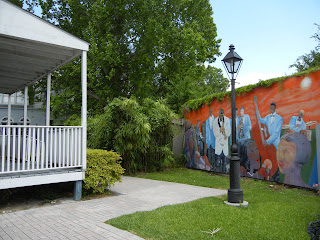How to describe "nothing" or "nothingness" defined as something inconsequent, of no significance?
"Pictures of No thing: Abstract Art since Pollock" is a book composed of six chapters transcribed from six lectures delivered by the fifty-second Mellon lecturer, Kirk Varnedoe, at the National Gallery of Art during the Spring of 2003.
thing: Abstract Art since Pollock" is a book composed of six chapters transcribed from six lectures delivered by the fifty-second Mellon lecturer, Kirk Varnedoe, at the National Gallery of Art during the Spring of 2003.
The first lecture gives an overwiew of the subject, and set the stage for the next five. The author makes references to Professor Gombrich, a previous lecturer, who presented abstract art as "being, at best, whims of trendy fashion, and, at worst, tainted with the most dangerous policies of totalitarian thoughts". After laying out the arguments of the detractors (hoax, propaganda, pictures of nothing...), Kirk Varnadoe with a deep knowledge of the subject, rehabilitates abstract art, corroborating his thoughts with abundant examples, illustrated with numerous photographs to make his point.
He helps the reader (or listener) to make sense of the history of abstract art, starting with the influence of Russian constructivism, to the Bauhaus, and its influence on french art and art in New York, Italian futurism and Pop art. The book is dense and the author goes in depth, discussing artists and their works to build the case for abstract art from Pollock, Tony Smith, Richard Serra, Ellsworth Kelly, Piet Mondrian...The history of abstract art unfolds.
A whole chapter is dedicated to minimalism which was a reaction to Pollock's abstract expressionnism . "Less is more", with differences between East Coast and West Coast minimalism, the West Coast being more Venetian (with softer colors and materials) and the East Coast more Tuscan (hard-edged). I must confess, this is the first time I understand the works from Donald Judd, McCracken and others. Activating the space around the work, making the viewer aware of the space around the work, is a new concept brought by minimalism.

After this presentation of minimalism,the next chapter, which you could expect, is about the evolution of minimalism, the reaction to the movement, with sometimes facetious works, presented in the chapter titled "satire, irony and abstract art". It is a side of abstract art, I was not familisr with . The author puts in parallels works from Roy Lichtenstein and Mondrian or Vasarely or Oldenburg and Brancusi, for example. It ends with a detailed study of Cy Twombly and Jasper Johns works.
The title of the last chapter is "abstract art now", now being then, 2003.
The six chapters, written each to be a lecture, are not disconnected and keep the reader interested by this history of abstract art since the 1950s. Kirk Varnedoe is a great lecturer (and writer) displaying in a very entertaining manner, his vast knowlege. The illustrations are plentiful and well chosen. Notes at the end of each chapter and references at the end of the book bring more information about the sources used by the author.
Abstract art is a challenge for the viewer who has to be engaged when looking at it. This book will help the viewer because:
"Understanding the tradition of abstract art sharpens our experience of what we are seing". "For those who learn it (the tradition of abstract art), it can make something out of nothing".

photographs by the author
"Four-Sided Pyramid", Sol Le Witt, 1997
"Black Plank", McCracken, 1967
"Circle I" and "Circle II", David Smith, 1962
"Number 1" (Lavender Mist), Jason Pollock, 1950















